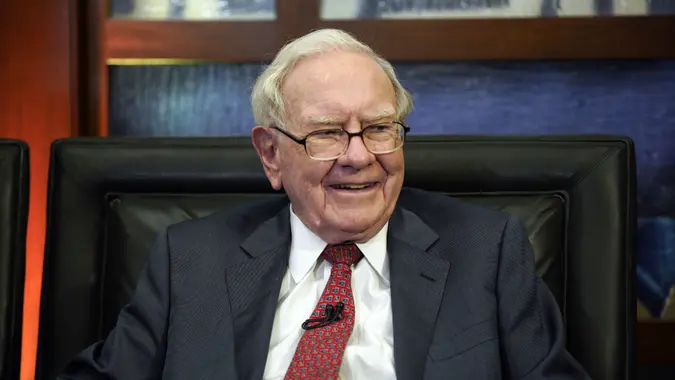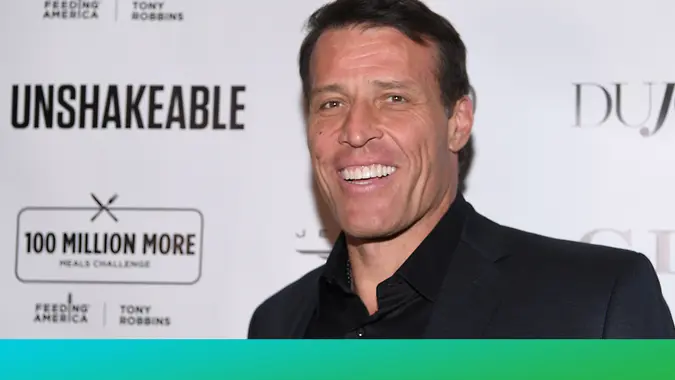4 Best Investing Strategies If You Make $60K, According to Ramit Sethi

Commitment to Our Readers
GOBankingRates' editorial team is committed to bringing you unbiased reviews and information. We use data-driven methodologies to evaluate financial products and services - our reviews and ratings are not influenced by advertisers. You can read more about our editorial guidelines and our products and services review methodology.

20 Years
Helping You Live Richer

Reviewed
by Experts

Trusted by
Millions of Readers
The FINRA Foundation’s National Financial Capability Study found that 48% of respondents had no investments in 2024. Whether the reason involves concerns about risk, complicated topics or a tight budget, delaying investing makes it harder to grow your wealth at any income level.
If you make $60,000, you may be in a comfortable place to cover your expenses but still not have a substantial amount of extra cash each month. Rather than letting that derail your investing plans, consider taking some advice from money expert Ramit Sethi.
In a recent YouTube video, he outlined these four investing strategies for $60,000 earners.
Also see why Sethi says it’s not too late to start investing and 10 ways to get started.
Invest at Least 5% of Your Income
Sethi recommended contributing 5% or more of your after-tax income to investments so you can start growing your money through compound interest as soon as possible.
However, Sethi also acknowledged that a lower rate, such as 2% or 3%, may be all you can afford for now, so you could start from there and aim to invest 1% more annually.
“Even by increasing your investment rate 1% per year, you will set yourself up to have hundreds of thousands of dollars more than if you just waited and did nothing,” he said.
Prioritize Tax-Advantaged Accounts
Putting your money in tax-advantaged accounts is a good strategy, as you’ll be able to either defer or avoid taxes on growth.
First, Sethi recommended that those with 401(k) accounts contribute enough pretax funds to get the maximum employer match. He gave an example of someone who saved 3% of their $60,000 before-tax income for 30 years and got a 7% return. That account would have reached over $175,000 without an employer match and nearly $351,000 with a 3% match.
If you don’t have a 401(k), you can use a traditional IRA for pretax contributions or a Roth IRA for after-tax contributions. The IRS noted that each comes with different rules and tax effects, which are important to be aware of before investing.
Sethi also highlighted health savings accounts, which are available to people with eligible health insurance plans that have a high deductible. You can invest funds beyond the minimum account balance kept for medical expenses, and the tax perks are unique.
“They give you a triple tax advantage because not only are your contributions tax-deductible, your investments grow tax-free and withdrawals for the money for qualified medical expenses are also tax-free,” he said.
Focus On Bigger Money Moves
You might tend to focus on small decisions, like whether to buy a $5 drink, instead of the money moves that will have the biggest impact on your wealth. Unfortunately, doing this can leave you with less than you need at retirement, so Sethi recommended prioritizing “$30,000 decisions.”
“These are things like increasing your investment rate just 1% every year, becoming so good at your job that they can’t ignore you and learning how to negotiate your salary,” he said.
Learning profitable skills, getting raises and finding new opportunities can help you boost your $60,000 income by many thousands. Not only would you be able to significantly increase your savings and investment contributions, but you could also enjoy having more cash to spend.
Figure Out What You Want
Over the next several years, you’ll likely have other savings goals besides retirement, such as a home purchase or college fund for your kids.
Sethi said you should consider how much money you’ll need for such milestones so you can make a plan based on the timeline. A savings goal calculator, like this one from Investor.gov, can help you figure out a monthly amount.
Plus, while he said that DIY money management is doable for most, Sethi discussed how a financial planning team can help with making financial decisions and understanding what’s possible. But he advised against those charging fee based on a percentage of your assets, which can especially get expensive.
 Written by
Written by  Edited by
Edited by 

























